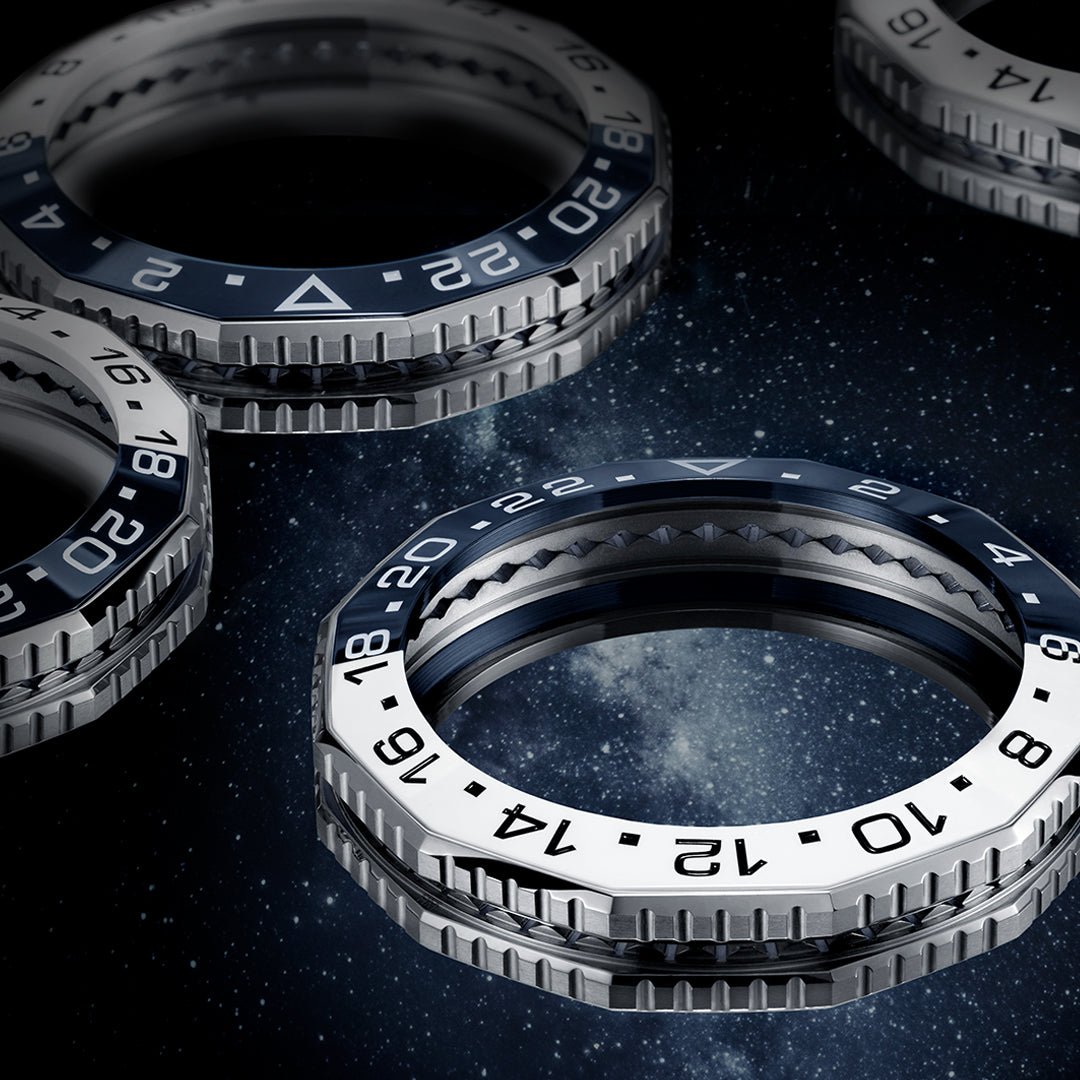Distinctive element from both an aesthetic and functional point of view, the The bezel of a watch is one of the most important components of a timepiece. Present on most models, from sports watches to diving watches to high-end watches, the bezel is not just a decorative detail: it performs specific functions that vary depending on the type of watch and its intended use.
Understanding what a watch bezel is for , how it works, and how it can be used allows enthusiasts and the curious to fully appreciate the complexity and precision that characterize contemporary watchmaking art.
Watch bezel: what is it and what is it for?
The bezel is a circular ring that frames the watch glass, located at the top of the case . It can be fixed or rotating and is used for measuring, calculating, or simply as a design element . In its most classic form, the bezel serves to protect the glass and ensure the watertightness of the internal movement .
However, in professional models (such as diving watches or aviator watches), the bezel takes on a functional role, allowing for extremely precise measurement of dive times, speed, or other time variables. In short, the function of the watch bezel varies depending on the type of timepiece, but its presence always strikes a balance between aesthetics and functionality.

Main features of the watch bezel
The characteristics of a bezel They depend on the type of watch and its intended use. Generally, the bezel is made of durable materials such as steel, ceramic, or titanium, chosen to ensure durability and resistance to shock or corrosion.
It may feature lateral knurling for easier grip and rotation, especially in diving models, and may include graduated scales or numerical notches that allow for quick calculations or measurements. Another important aspect is the directionality of the bezel: some rotate in both directions (bidirectional), others only counterclockwise (unidirectional), for safety reasons when taking measurements, as in the case of diving watches.
How a Watch Bezel Works: What You Need to Know
In diver's watches, the bezel allows you to set a time reference to monitor the duration of the dive : by rotating it so that the zero point coincides with the position of the minute hand, you can easily read the time spent underwater.
In GMT watches, however, the bezel acts as a second time indicator, allowing the wearer to view a different time zone . In some chronograph models, the bezel can be used to calculate average speeds, split times, or production units (tachometric and telemetric bezels).
In addition to its technical functions, the bezel also contributes to the visual identity of the watch , determining its style: sporty, elegant or professional.

Types of watch bezels: the different models
In the world of watchmaking, there are numerous types of bezels , each with a specific use. Among these, for example, the unidirectional bezel , typical of diving watches, which rotates only counterclockwise to avoid errors in calculating dive times; the bidirectional bezel , used mainly in aviation or travel watches, which allows adjustment in both directions to calculate times or time zones; and the fixed, non-rotating bezel , with a mainly aesthetic or protective function, often made of high-quality materials.
Then there are models with more technical functions, such as the tachometric bezel , which allows you to calculate the average speed based on the time and distance traveled, or the GMT bezel , which displays a second time zone via a 24-hour scale. In professional or military settings, you can also find bezels with a decimal or telemetric scale , used for specific measurements.
The variants available on the market are numerous and increasingly diverse: each type of bezel contributes to defining the personality of the watch, adapting it to both functional and aesthetic needs.

How to use the watch bezel
The way the bezel is used varies depending on its intended function . In diving watches, the bezel is rotated before the dive to set the maximum expected time; in GMT watches, it is adjusted to display the time in another geographical zone. In chronographs, however, the tachometric bezel allows you to calculate the average speed by positioning the second hand on the starting reference point.
It is important to note that, in haute horlogerie models, the rotation of the bezel occurs with calibrated precision, guaranteed by sophisticated internal mechanisms and the highest quality materials, such as scratch-resistant ceramics or precious metals.

How to remove (and replace) the watch bezel
Removing or replacing the bezel is a delicate operation, reserved for expert professionals or authorized brand service centers . The bezel is, in fact, fixed to the case via a pressure or snap system, and its removal requires specific tools to avoid damaging the crystal or bezel.
Changing the bezel of your watch may be necessary to replace worn components or to update the aesthetics of the timepiece, such as installing a different color or material bezel. Some luxury brands offer customization options or official replacement parts to maintain the integrity of the model.
Attempting to remove the bezel of a watch without the appropriate skills can compromise the seal and functioning of the movement , therefore it is always advisable to contact a specialized laboratory such as those made available by Pisa 1940 .

The most prestigious bezel watches available on Pisa 1940
The watch bezel is one of the most fascinating and versatile elements of fine watchmaking. From a technical tool for professional measurements to a striking aesthetic component, the bezel embodies the perfect blend of functionality and design that characterizes the finest timepieces.
In the Pisa 1940 watch selection, models with fixed or rotating bezels, in steel, titanium or ceramic, made by the most prestigious Maisons, including Rolex , TAG Heuer , Cartier , Patek Philippe are available. and Tudor . Discovering these timepieces means coming into contact with the tradition and innovation of luxury watchmaking: every bezel, every detail, every movement tells a story of precision and timeless beauty.

